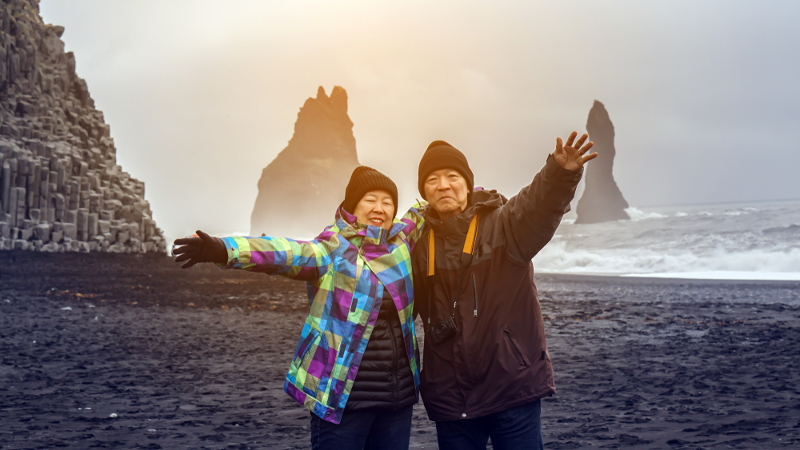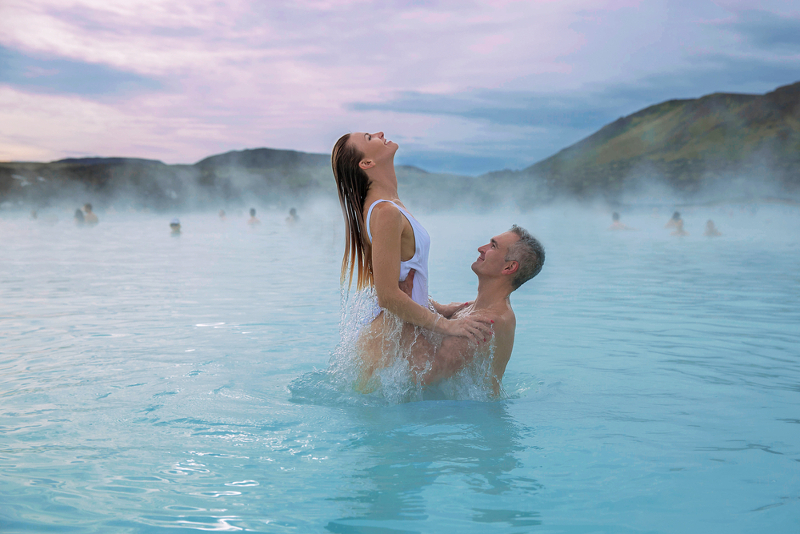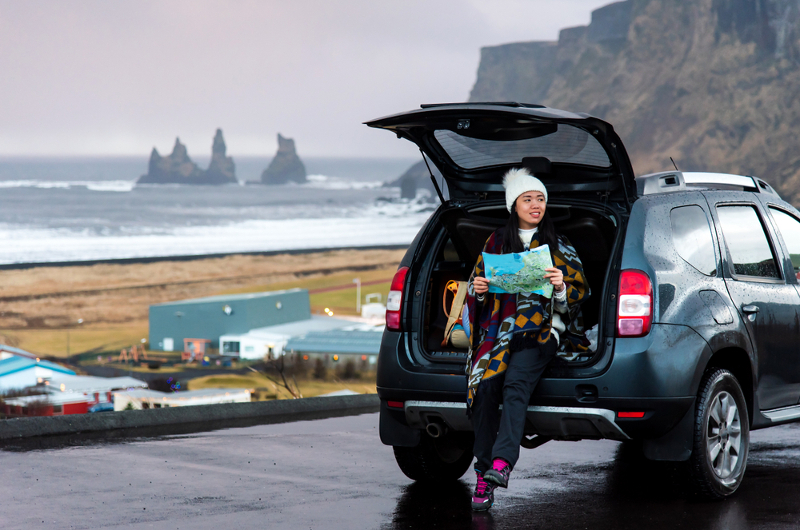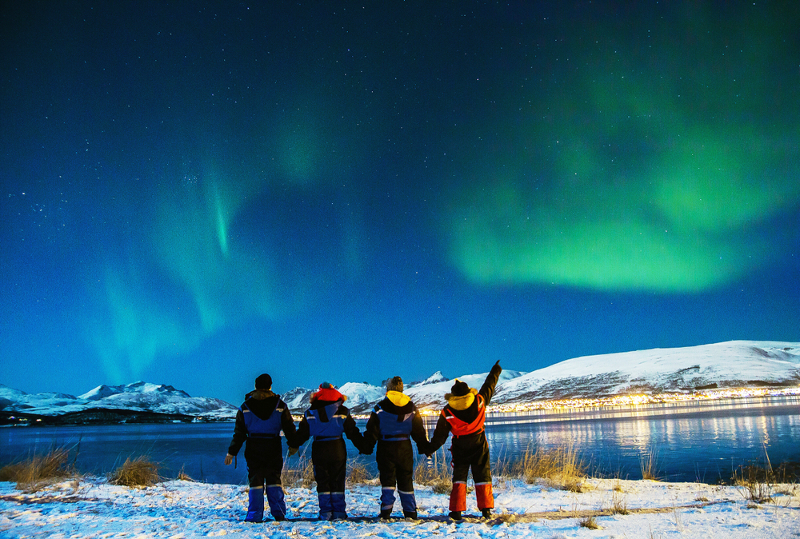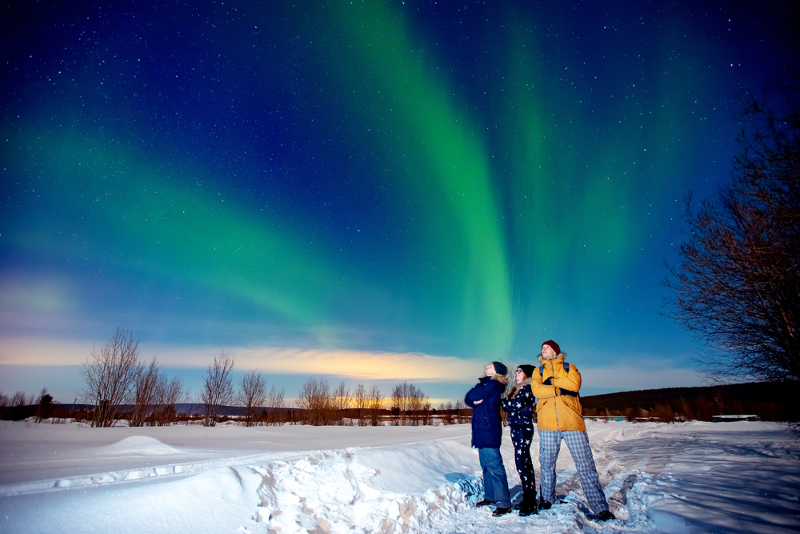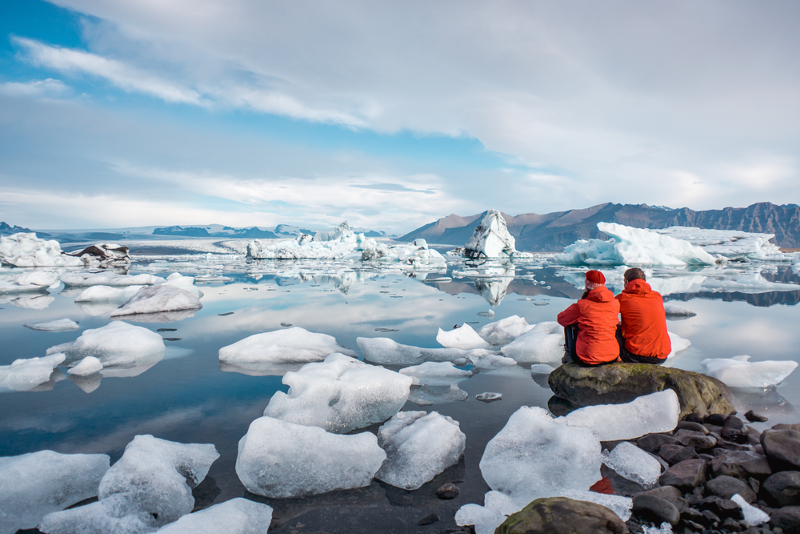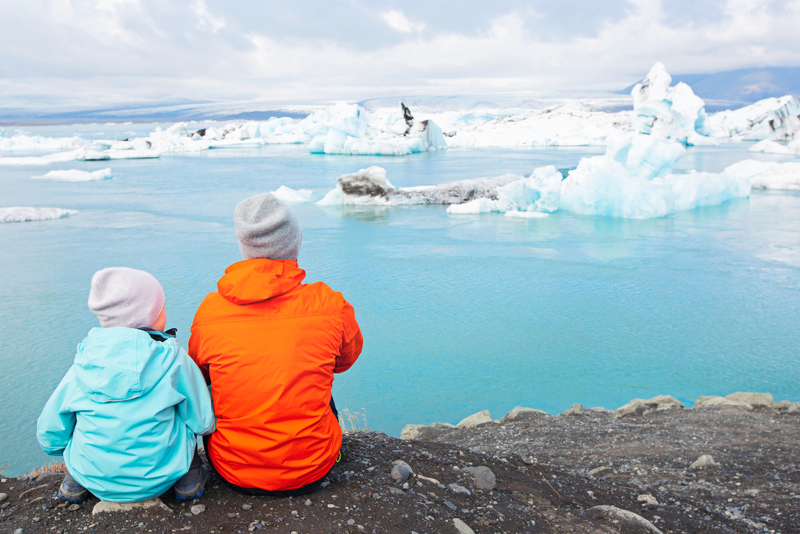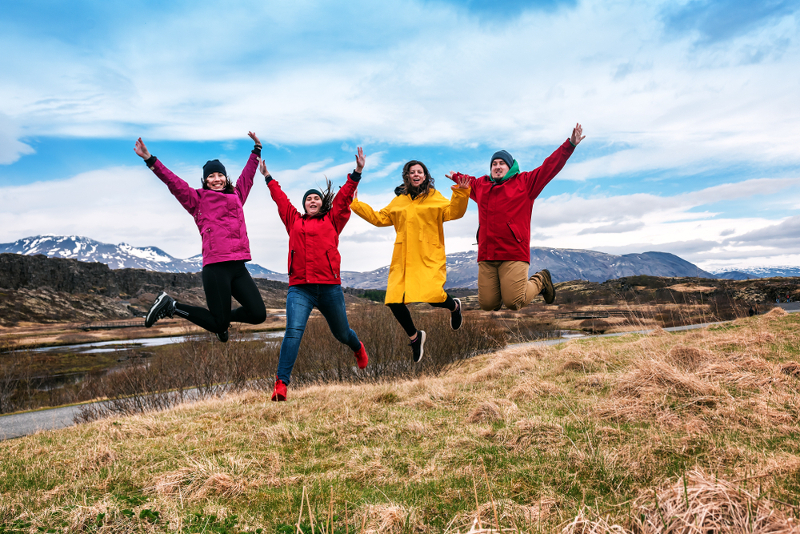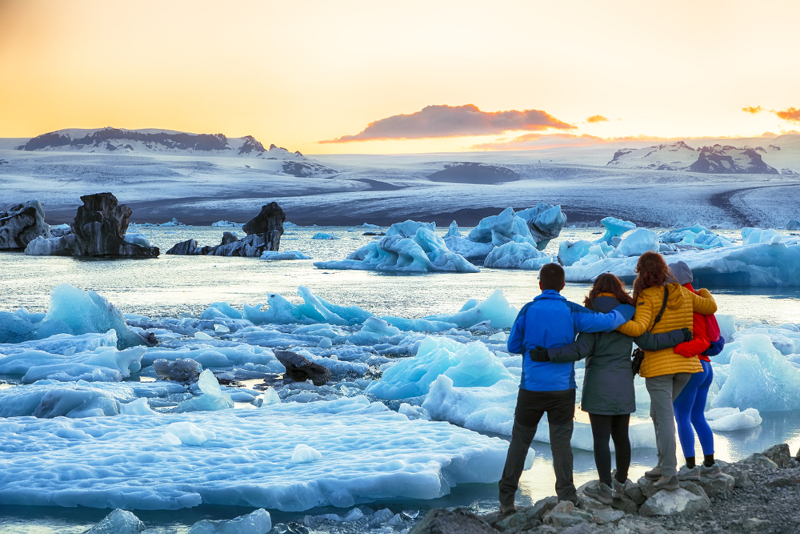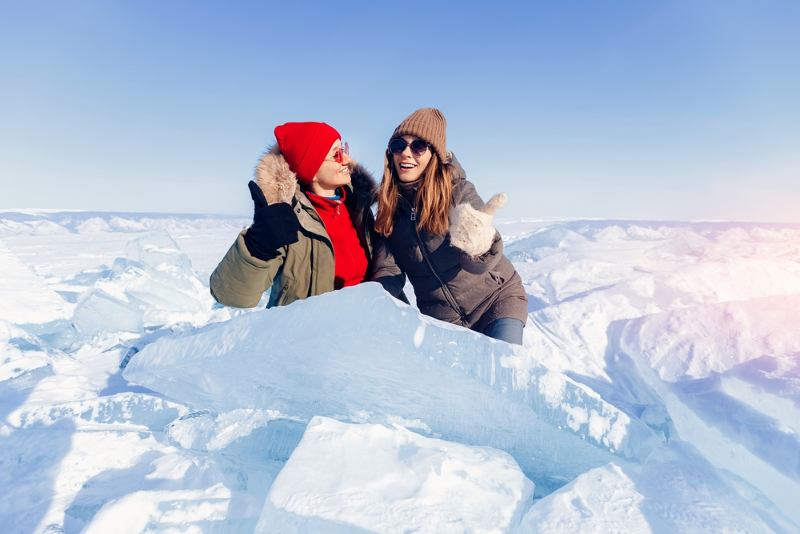One of the greatest locations on Earth to witness the Northern Lights, also known as the Aurora Borealis, is Iceland. The Northern Lights can be seen dancing enchantedly across the sky on clear, crisp winter nights in Iceland. Each performance is completely unique, and it is very fantastic to watch this magnificent light show with different colors dancing and whirling before your eyes. It's a life-altering event, according to some. Although they are a natural phenomenon and therefore elusive and unpredictable, the Northern Lights are one of the main attractions for travelers to Iceland during the winter.
Each winter, travelers from across the globe flock to this Nordic island to experience the celestial dance of green, purple, and pink lights shimmering across the Arctic sky. Adventures and one-of-a-kind experiences can be found everywhere in Iceland, a fantastic winter vacation. Whether you’re seeking a self-drive adventure, a guided Iceland northern lights tour, or a stay in one of the luxury hotels in Iceland for northern lights viewing, the country offers something for every traveler.
Each winter, travelers from across the globe flock to this Nordic island to experience the celestial dance of green, purple, and pink lights shimmering across the Arctic sky. Adventures and one-of-a-kind experiences can be found everywhere in Iceland, a fantastic winter vacation. Whether you’re seeking a self-drive adventure, a guided Iceland northern lights tour, or a stay in one of the luxury hotels in Iceland for northern lights viewing, the country offers something for every traveler.
Best Time To Visit Iceland For Northern Lights

The months of September through April are the best time to see northern lights in Iceland. Although they are sometimes seen around the end of August, they are extremely dim due to the residual sunlight.
Generally speaking, it is better to see the aurora's vivid hues in darker environments. During and around the winter solstice, which falls on December 21st every year, Iceland experiences up to twenty hours of darkness.
You should also look at the aurora forecast for Iceland. On a scale of one to nine, they are worth striving for if they score higher than three, but two is typically apparent. In order to let you know where the skies are clear, it also provides a description of the cloud cover across the nation.
Generally speaking, it is better to see the aurora's vivid hues in darker environments. During and around the winter solstice, which falls on December 21st every year, Iceland experiences up to twenty hours of darkness.
You should also look at the aurora forecast for Iceland. On a scale of one to nine, they are worth striving for if they score higher than three, but two is typically apparent. In order to let you know where the skies are clear, it also provides a description of the cloud cover across the nation.
What to Pack for Your Trip to Iceland for Northern Lights

Given Iceland's erratic and frequently frigid climate, it is imperative to dress adequately while planning to seek for the northern lights. It's advisable to prepare in advance because you'll probably be standing outside for extended periods of time!
Choosing layers is essential; to preserve body heat, start with thermal base layers and then move on to insulating middle layers, such as a down jacket or fleece. An outer layer that is windproof and waterproof is essential for protecting you from the weather and guaranteeing comfort when you look up at the stars.
Another important factor to think about is footwear. To securely traverse icy or snowy terrain, put on waterproof, insulated boots that provide both warmth and traction. To reduce heat loss through the extremities, don't forget to wear gloves, a decent hat, and warm wool socks. To assist you warm up from the inside out, it's also a good idea to pack a thermos with a hot beverage!
To ensure a comfortable and unforgettable northern lights experience, always check the weather prediction and be ready to modify your outfit according to the conditions of the night.
Choosing layers is essential; to preserve body heat, start with thermal base layers and then move on to insulating middle layers, such as a down jacket or fleece. An outer layer that is windproof and waterproof is essential for protecting you from the weather and guaranteeing comfort when you look up at the stars.
Another important factor to think about is footwear. To securely traverse icy or snowy terrain, put on waterproof, insulated boots that provide both warmth and traction. To reduce heat loss through the extremities, don't forget to wear gloves, a decent hat, and warm wool socks. To assist you warm up from the inside out, it's also a good idea to pack a thermos with a hot beverage!
To ensure a comfortable and unforgettable northern lights experience, always check the weather prediction and be ready to modify your outfit according to the conditions of the night.
Where to See Northern Lights in Iceland?

Reykjavik: The capital of Iceland, Reykjavik, is a bustling city that provides the ideal fusion of adventure, culture, and history. Even though it's not the most isolated place, Reykjavik's closeness to open, dark areas allows visitors to see the Northern Lights without venturing too far from the conveniences of the city. Although there is some light pollution in Reykjavik, you can drive to darker locations that are suitable for seeing the Northern Lights, including Grótta Lighthouse or Öskjuhlið Hill, in 15 to 20 minutes.
Thingvellir National Park: Thingvellir National Park, a breathtaking UNESCO World Heritage Site of geological significance, is situated around 45 minutes from Reykjavik. The vast plains of Thingvellir, far from the lights of the city, offer some of the greatest views of the Northern Lights. The park's expansive, level terrain guarantees unhindered views of the night sky, and the clear skies that are frequently brought about by its low elevation are essential for witnessing the enchanted lights. Thingvellir is among the best places in Iceland for northern lights because of all of these reasons.
Jökulsárlón Glacier Lagoon: One of the best places in Iceland for northern lights is Jökulsárlón Glacier Lagoon, which is located on the country's southeast coast. One of Iceland's most popular natural wonders, the lagoon itself is supplied by the Breiðamerkurjökull Glacier and is renowned for its floating icebergs and crystal-clear blue waters.
The Aurora's reflection in the freezing waters of the lagoon is what makes Jökulsárlón unique for Northern Lights viewing. This is one of the greatest sites to watch the Northern Lights in Iceland because of the icebergs' surreal scenery and the isolated location, which offers minimal light pollution. The lights dance on the water's surface and in the sky on quiet nights, making for a rather breathtaking sight.
Vik: Vik is one of the best places in Iceland for northern lights because of its location along the southern shore, which provides unhindered views of the northern sky with minimal light pollution. A powerful visual experience is created by the contrast between the black sand and the vibrant lights above. Vik is one of the best places in Iceland to see the Aurora Borealis because of its long, dark winter evenings.
Akureyri: Arguably the "Capital of the North," Akureyri is the second-biggest city in Iceland and is located in the northern part of the country. It is a well-liked destination for tourists visiting the north because, despite its size, it retains its small-town character and has a breathtaking fjord backdrop. One of the greatest locations in Iceland for a more tranquil Northern Lights experience is Akureyri, which boasts long, dark winter nights. Along with Akureyri's brighter skies, the surrounding mountains and fjords provide a variety of picturesque vantage locations that increase your chances of seeing the Aurora on a winter night.
How to See Northern Lights in Iceland
To maximize your chances of witnessing the aurora northern lights Iceland, follow these tips:
Check the Aurora Forecast: Use local apps and websites to monitor solar activity and cloud cover.
Escape Light Pollution: Head away from city lights to rural or wilderness areas.
Be Patient and Flexible: The aurora is unpredictable; sometimes it appears for minutes, sometimes for hours.
Join a Tour: An Iceland northern lights tour provides expert guidance, transportation, and the best chances for sightings.
Stay Multiple Nights: The longer your stay, the higher your chances of clear skies and auroral activity.
Remember, seeing the northern lights in Iceland always involves some luck; weather and solar activity are key factors.
Thingvellir National Park: Thingvellir National Park, a breathtaking UNESCO World Heritage Site of geological significance, is situated around 45 minutes from Reykjavik. The vast plains of Thingvellir, far from the lights of the city, offer some of the greatest views of the Northern Lights. The park's expansive, level terrain guarantees unhindered views of the night sky, and the clear skies that are frequently brought about by its low elevation are essential for witnessing the enchanted lights. Thingvellir is among the best places in Iceland for northern lights because of all of these reasons.
Jökulsárlón Glacier Lagoon: One of the best places in Iceland for northern lights is Jökulsárlón Glacier Lagoon, which is located on the country's southeast coast. One of Iceland's most popular natural wonders, the lagoon itself is supplied by the Breiðamerkurjökull Glacier and is renowned for its floating icebergs and crystal-clear blue waters.
The Aurora's reflection in the freezing waters of the lagoon is what makes Jökulsárlón unique for Northern Lights viewing. This is one of the greatest sites to watch the Northern Lights in Iceland because of the icebergs' surreal scenery and the isolated location, which offers minimal light pollution. The lights dance on the water's surface and in the sky on quiet nights, making for a rather breathtaking sight.
Vik: Vik is one of the best places in Iceland for northern lights because of its location along the southern shore, which provides unhindered views of the northern sky with minimal light pollution. A powerful visual experience is created by the contrast between the black sand and the vibrant lights above. Vik is one of the best places in Iceland to see the Aurora Borealis because of its long, dark winter evenings.
Akureyri: Arguably the "Capital of the North," Akureyri is the second-biggest city in Iceland and is located in the northern part of the country. It is a well-liked destination for tourists visiting the north because, despite its size, it retains its small-town character and has a breathtaking fjord backdrop. One of the greatest locations in Iceland for a more tranquil Northern Lights experience is Akureyri, which boasts long, dark winter nights. Along with Akureyri's brighter skies, the surrounding mountains and fjords provide a variety of picturesque vantage locations that increase your chances of seeing the Aurora on a winter night.
How to See Northern Lights in Iceland
To maximize your chances of witnessing the aurora northern lights Iceland, follow these tips:
Check the Aurora Forecast: Use local apps and websites to monitor solar activity and cloud cover.
Escape Light Pollution: Head away from city lights to rural or wilderness areas.
Be Patient and Flexible: The aurora is unpredictable; sometimes it appears for minutes, sometimes for hours.
Join a Tour: An Iceland northern lights tour provides expert guidance, transportation, and the best chances for sightings.
Stay Multiple Nights: The longer your stay, the higher your chances of clear skies and auroral activity.
Remember, seeing the northern lights in Iceland always involves some luck; weather and solar activity are key factors.
How to photograph the Northern Lights?

Are you considering taking your own northern lights photos this winter? Here are some tips to help you capture the aurora northern lights in Iceland:
Equipment Requirements:
- Camera: To achieve the best results, use an SLR camera with manual focus
- Tripod: Without a tripod, a long exposure shot will be a shaky, blurry mess, even with the steadiest hands.
- Shutter release: To achieve even more steady images, purchase a remote shutter release, which eliminates the need for you to touch or shake the camera.
- Extra batteries: Keep extra batteries on hand because freezing temperatures tend to drain them more quickly.
- Flashlight or headlamp: A torch or headlamp will help you see what you're doing because you'll be shooting in the dark and extremely chilly conditions.
Camera & Lens Settings:
- Image stabilisation: If your lens includes image stabilization, switch it off.
- ISO: Set the ISO to a minimum of 400 or 800, ideally greater. Although it varies depending on the lens you're using, this is a reasonable range to work within.
- Aperture (f-stop): Reduce the aperture as much as you can. As a result, the lens will let in more light. On the majority of cameras, this figure can drop to roughly 3.5.
- Shutter speed: Try a lengthy exposure of 15 to 30 seconds for the shutter speed. The amount of light caught increases with exposure duration.
Where to Stay in Iceland for Northern Lights?

Choosing the right accommodation can enhance your aurora experience. Here are top options, including luxury hotels in Iceland for northern lights:
Hotel Rangá: Far from the majority of light pollution, amid the Icelandic countryside, is the northern lights hotel, Hotel Rangá. They create the ideal environment for night sky viewing by shutting off our outside lights. You will be able to see far-off planets and lovely constellations on clear evenings. If you're lucky, you might even be able to have a glass of bubbly while relaxing in one of our geothermally heated hot pools while seeing the northern lights in style.
Hotel Rangá: Far from the majority of light pollution, amid the Icelandic countryside, is the northern lights hotel, Hotel Rangá. They create the ideal environment for night sky viewing by shutting off our outside lights. You will be able to see far-off planets and lovely constellations on clear evenings. If you're lucky, you might even be able to have a glass of bubbly while relaxing in one of our geothermally heated hot pools while seeing the northern lights in style.
ION Adventure Hotel: Near Þingvellir National Park, in the middle of Iceland's lava landscapes, sits the spectacular modernist ION Adventure Hotel. The hotel is well-known for its eco-friendly architecture and offers a geothermal outdoor pool, the famous Northern Lights Bar with floor-to-ceiling windows, and quick access to adventure sports, aurora tours, and breathtaking natural views.
Fosshotel Glacier Lagoon: Nestled between Skaftafell and Jökulsárlón, this modern hotel offers stylish rooms and prime access to some of the best places in Iceland for northern lights. Large windows in the rooms and public areas allow for aurora viewing from the warmth of the hotel, while staff often provide aurora wake-up calls so you never miss a display. After a night of aurora watching, guests can unwind in the spa facilities, making it an ideal base for a luxury northern lights Iceland experience.
Deplar Farm: A luxury retreat in the remote Troll Peninsula, Deplar Farm offers all-inclusive packages and exceptional aurora viewing from geothermal pools. Seeing the Northern Lights, often called the Aurora Borealis, dance is one of the most captivating things to do at Deplar Farm. Visitors can take part in Northern Lights trips that are led by experienced local guides who are familiar with the best locations to see this celestial phenomenon. Picture yourself leaving the hotel on a clear winter night, with snow-capped mountains all around you, as the sky bursts with pink, purple, and green glimmerings. You will always remember that very beautiful occasion
Hotel Husafell: With an average of three Aurora views each week during the winter, the Húsafell Resort is an ideal location for Northern Lights viewing. Húsafell is located in the center of Iceland's Aurora Zone, far from light pollution and in the isolated wilderness of West Iceland. The Northern Lights Institute is quite close by. Free Northern Lights wake-up calls are provided to Hotel Húsafell customers who wish to increase their chances of witnessing the lights.
Want to experience the Northern Lights in style? Discover the best luxury glass igloo stays in our Scandinavia Aurora Lodge Guide
What Other Things to Do on Your Iceland Trip?

While the aurora is a highlight, Iceland offers a wealth of other experiences:
- Golden Circle Tour: Visit Þingvellir, Geysir, and Gullfoss waterfall—three of Iceland’s most iconic sights.
- Blue Lagoon: Soak in the mineral-rich, geothermal waters surrounded by lava fields.
- Glacier Hiking and Ice Caving: Explore Vatnajökull or Langjökull glaciers on guided adventures.
- Waterfall Chasing: Marvel at Seljalandsfoss, Skógafoss, and Dettifoss, especially beautiful in winter.
- Black Sand Beaches: Walk along Reynisfjara and admire the basalt columns and sea stacks.
- Whale Watching: Tours depart from Reykjavik and Akureyri, offering chances to see humpbacks, orcas, and more.
- Snæfellsjökull National Park: Hike, explore lava caves, and enjoy the dramatic scenery.
- Cultural Experiences: Visit museums, sample Icelandic cuisine, and enjoy Reykjavik’s vibrant arts scene.
Many Iceland Packages combine aurora hunting with these must-do activities for a well-rounded trip.
Essential Tips for Iceland's Northern Lights Tours

Remember that seeing the northern lights does need a fair deal of patience and luck, as well as the proper moment, location, and weather. Important things to keep in mind if you wish to witness this natural phenomenon are listed below.
1. Select the appropriate month
In the Nordic region, the northern lights are primarily visible from October to March each year.
2. Examine the forecast
Without the proper combination of clear skies and solar activity, location is meaningless. We advise visiting the aurora forecast page of the Icelandic Met Office.
3. Leave town
Dark evenings are necessary, but it's also a great way to escape the bright lights of the city. Your view of the sky will be substantially enhanced with a stay in the countryside or a guided journey into the forest.
4. Stay up late.
11 p.m. to 2 a.m. is the peak period. If the lights go out, certain rural hotels might provide a unique "wake-up" service.
5. Exercise patience
There is no set time for the lights to appear. Most northern lights trips include some sort of entertainment or refreshments to keep customers warm and engaged, even if you might have to wait for a few hours. Unfortunately, there is no way to guarantee sightings.
6. Gather together
Insulated outerwear and thermal layers are crucial. Coveralls and/or other warm clothing will typically be loaned to you if you're on a guided expedition.
FAQs
1. Which month is best for Northern Lights in Iceland?
Ans: The best time to see northern lights in Iceland is from late September to early April, with peak activity around the equinoxes in September and March.
2. How likely is it to see the northern lights in Iceland?
Ans: While Iceland is one of the best places in the world for aurora viewing, sightings depend on solar activity and clear skies. Staying for at least a week increases your chances, but there’s always an element of luck due to weather variability.
3. What city in Iceland has the best northern lights?
Ans: Reykjavik offers convenient viewing spots like Grótta Lighthouse, but for the best chances, head to Akureyri, Lake Mývatn, or rural areas with minimal light pollution.
4. How long should I stay in Iceland to see the northern lights?
Ans: A stay of 5–7 nights is recommended to maximize your chances, as this allows for multiple viewing opportunities and flexibility around changing weather conditions.
5. How much does an Iceland Northern Lights trip cost?
Ans: Iceland northern lights tour cost varies: guided group tours start around 10,000–20,000 ISK per person, while luxury packages and private tours can cost significantly more. Self-drive Iceland Packages may offer more flexibility and value.
6. Is Iceland or Norway better for the Northern Lights?
Ans: Both countries offer excellent aurora viewing. Iceland has dramatic landscapes and geothermal attractions, while Norway often has clearer skies and more specialized aurora infrastructure. Your choice depends on your travel style and interests. For a more detailed comparison to help you decide, check out our guide: "Iceland Or Norway: Decoding The Better Place For Northern Lights."
Want best packages handpicked of Iceland just for you?
Share your travel needs and our travel experts will reach out to you.





